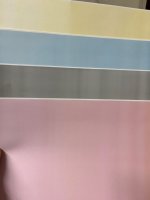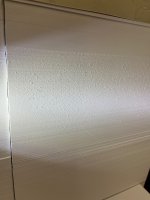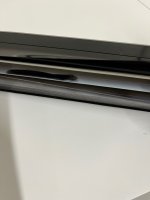Stickman42
Well-known member
We've had the Iridesse since 1/1/22. Recently (in the past 6 weeks) we've been seeing light/dark streaks in our prints (see attachment). Our techs have said it's the charge wires, and replacing them with new immediately resolves the problem. However, we are needing to replace them much sooner (1 week instead of one month). The tech also said he's not seen this problem at any other machine sites. This makes me think it's something environmental. I have been running a cool mist humidifier in the wide open room, mainly for other equipment, and the humidity level at the Iridesse is currently at 37%. This issue was not present at this time last year. Any ideas on what the cause might be?
Attachments
Last edited:











